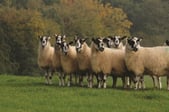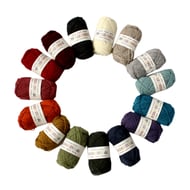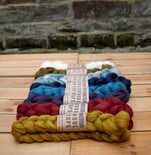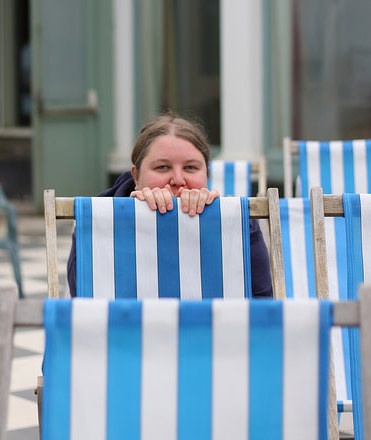Here at baa ram ewe we are passionate about British wool. By using our local wool, we’re supporting our sheep farmers, saving fuel that would be needed to transport wool by air or sea from further afield, and also supporting local industry.
When baa ram ewe opened back in 2009, many people thought that British wool was only good for carpets - it was too coarse and scratchy and no one would want to knit with it. Fortunately, many knitters and crocheters now know that there’s a huge variety of different breeds and types of wool and much of it is soft and lovely to knit with and wear.
One question we often get asked of yarns that simply say “British wool” on their labels is “what breed is that, then?”. The answer is that it’s likely to be a mix of different breeds and crossbreed wool. When fleeces are sorted and graded for auction, they’re put into massive bales of the same type and quality. If you had visions of all the wool just being dumped in together and mixed up, this definitely doesn’t happen! However, except for some specific breeds in high demand, like Wensleydale and Blue Faced Leicester, wool from different breeds is mixed as long as it’s of the same type. Wool from breeds with short, crimpy fibres will be put together, as will coarse wool from mountain breeds, and lustrous wool from longwool breeds, and so on. This is the case with our lovely new Pip Colourwork yarn which comes in 25g balls and is perfect for little projects or fairisle and other colourwork projects.
The mills making hand knitting yarns can then select from these graded, blended fleeces for the type they want for their yarn. Often this is a wool of medium fineness, not too scratchy but not BFL or merino soft, and with individual fibres of medium length. One such blend is often sold to hand spinners and felters as “English 56s”; the ‘56’ denotes the fineness of the fibres. This blend has plenty of loft and bulk, and is a good all rounder for hand spinning and felting. It’s generally pretty economical in cost too.
You might see generic British wool blended with other fibres, such as Bluefaced Leicester, for softness, or with nylon for softness and strength. The latter mix can be a great choice for warm and hard wearing socks. Even though it’s not as glamorous as specific breed wool, its lower cost makes a great choice for all kinds of projects. Plus, you can feel good that you’re supporting British farmers and our local textile industry, and helping the environment by keeping your ‘wool miles’ down and using a renewable, biodegradable product.
Our own British wool topsfor felting and spinning, and our baa ram ewe Big Balls are made from blended British wool. You can also find it in West Yorkshire Spinners’ Signature Sock and the amazingly good value Aire Valley DK and Aire Valley Aran yarns. If you’re after a thicker yarn, why not try New Lanark Chunky,made at the historic New Lanark mills in Scotland (now a UNESCO World Heritage site).







